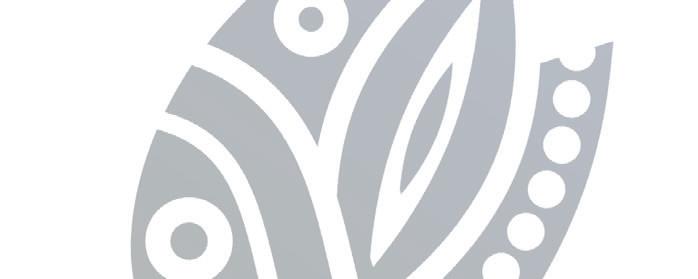
8 minute read
the sports doctor
What Is SPORTS MEDICINE?
The terms “sports medicine” and “sports medicine doctor” are commonly used by athletes, coaches, trainers, patients and even other doctors. However, it is really fairly unclear as to exactly what these, and quite a few other, terms are referring to. Listed below are the five most common questions and their answer in hopes of giving you some guidance through the maze of sports medicine.
1. What is Sports Medicine?
Sports medicine is the branch of medicine that is concerned with the treatment of injuries or illness resulting from athletic or recreational activities. Sports medicine involves the prevention and treatment of injuries to athletes and other physically active people, as well as the use of exercise for recovery from non-sports injuries. Orthopedic (musculoskeletal system) surgeons (MDs) often specialize in sports medicine. The phrase “sports medicine” is not specific to one career/ profession. Instead, it encompasses a group of professionals from various disciplines whose focus is the health of an athlete. Athletes can be all ages and play on all different levels (youth, high school, collegiate, recreational and professional). Orthopedic sports medicine is a specific area in the sports medicine family that is concerned with the investigation, preservation and restoration by medical, surgical and rehabilitative means to all structures of the musculoskeletal system affected by athletic activity. While sports medicine originally began as an offshoot of several broader fields, designed to treat athletes in a way that allowed early, safe and efficient return to the playing field, the techniques and principles of sports medicine and now being brought back to general medicine. These methods are now being used to bring workers back to work, or simply to restore function to athletes and non athletes alike, to allow for efficient return to the activities of daily living.
2. What is a Sports Medicine Physician?
A sports medicine physician is a doctor with specialized training who promotes lifelong fitness and wellness and encourages prevention of illness and injury. This physician helps the patient maximize function and minimize disability and time away from sports, work or school. He or she is a leader of the sports medicine team, which also includes specialty physicians and surgeons, athletic trainers, physical therapists, coaches, parents, other personnel and, of course, the athlete.
After completing residency, they obtain 1-2 years of additional training in sports medicine through accredited fellowship (subspecialty)
programs in sports medicine. Physicians, who are board certified in their specialty, such as orthopedic surgery, are then eligible to take a subspecialty qualification examination in sports medicine. Additional forums, which add to the expertise of a sports medicine physician, include continuing education in sports medicine and membership and participation in sports medicine societies. Many specialties including general medicine, family practice, physical medicine and rehabilitation and, of course, orthopedic surgery, offer advanced training and subspecialty certification in sports medicine. Each specialty brings its own expertise to the field.
3. Do Sports Medicine Physicians Only Treat
Competitive Athletes?
No, sports medicine physicians are ideal physicians for the non-athlete as well and are excellent resources for the individual who wishes to
become active or begin an exercise program. For the “weekend warrior” or “industrial athlete” who experiences an injury, the same expertise used for the competitive athlete can be applied to return the individual as quickly as possible to full function. Most sports medicine physicians treat non-athletes as well. In doing so, they adapt the techniques and protocols that allow for athletes to regain a high level of function, to achieve the same goal for nonathletes in the normal daily lives. From a worker injured on the job, to a stay-at-home mother hurt while playing with her kids, any patient can benefit from the application of sports medicine techniques to their problems.
4. What are the Most Common Sports
Medicine Injuries?
Most sports medicine injuries fall into one of two categories: acute and chronic or overuse. Acute injuries occur suddenly and are the result of a collision, a fall or a simple twist. Chronic, or overuse, injuries are the results of repetitive stress placed upon a single body part. When repetitive stresses are increased too rapidly or with too much intensity and the body is not adequately prepared, an injury occurs. When looking at the most common injuries, some of them are acute, and some are overuse. The seven most common sports injuries in order are ankle sprain; groin pull; hamstring strain; shin splints; knee injury: ACL tear; knee injury: patellofemoral syndrome; knee injury: meniscus (cartilage) tear; tennis elbow: lateral epicondylitis; shoulder injury: rotator cuff tear; shoulder injury: AC separation; and shoulder injury: dislocation.
5. Does a Sports Medicine Orthopedist
Only Treat Injuries?
While a great deal of a sports medicine specialist’s time is spent treating injuries in athletes and non-athletes alike, much of the time is also spent on other responsibilities. Much of the focus of sports medicine is on injury prevention. Another large area of concern is the area of conditioning and optimizing performance. Educating and coordinating coaches, athletes and the other members of the sports medicine team is also the responsibility of the sports physician. Family doctors on the team often deal other issues such as cardiac evaluations, skin conditions, infections and asthma, but orthopedic sports doctors generally limit their scope to musculoskeletal problems. Orthopedic sports medicine specialists condition and train athletes; provide fitness advice relating to athletic performance; give advice on athletic performance and the impact of dietary supplements, pharmaceuticals, and nutrition on athletes’ short- and long-term health and performance; coordinate medical care within athletic team settings, including other health care professionals, such as athletic trainers, physical therapists, and non-orthopedic physicians; and conduct on-the-field evaluation and management of illnesses and injuries.








room for your longest toe to push off.Seven moSt common SportS injurieS
The main portion of the shoe that surrounds your foot is called uppers. Modern sho1. Ankle spraines have synthetic uppers rather 5. Knee injuries: ACL tear, Patellofemoral syndrome, and than leather or other na2. Groin pull tural fibers. Newer materials are Meniscus (cartilage) tear lighter, quiring washable, breathe better little or no break-in. Be 3. Hamstring strain and a sure re to more flexible, rechoose the upper 6. Tennis elbow: Lateral epicondylitis best suited to your expecte4. Shin splints d usage. 7. Shoulder injuries: Rotator cuff tear, AC separation, and
Themidsoleis locatedbetweentheoutsoleandtheupper. Shoulder dislocation
Many believe it is the most important part of any running shoe. It controls excessive foot motion and providOrthopedic sports medicine specialists have es cush- probably time to see the doctor. With the informaioning and shock absorption. Some synthetic foamsknowledge of soft tissue biomechanics, injury healare tion provided, hopefully the choice of which doctor used for the midsole; they are light, but not duing, and repair; treatment options, both surgical rable. to see will not be as confusing. Polyurethane is also commonly used; although durable, it is denser, heavier and harder. Many shoes are now cushioned with gel, airbags, silicone or foam capsules. These and non-surgical, as they relate to sports-specific injuries and competition; principles and techniques Dr. Michael L. Gross, the founder and director of Active Orthopedics and Sports Medicine P.A., www. are all attempts to increase cushioning and durability at same time. The outsole is the treaded layer on the bottom of the s of rehabilitation that enable the athlete to return to competition as quickly and safely as possible; and knowledge of athletic equipment and orthotic t h h o e e for running on dirt or grass. Today, most shoes have a ridged sole, which is more flexible and best for running on asphalt or cement. ActiveOrthopedics.com, is the section chief for sports medicine and the orthopedic director for the center for sports medicine at Hackensack University Medical Center. Recognizing the importance of nutrition and glued to the midsole. The outsole resists wear, provid devices (braces, foot supports, etc.) and their use in es The heel counter is the rigid material that surrounds th alternative health in both sports medicine and overall e traction and absorbs shock. The outsole is usually mprevention and management of athletic injuries. ade of heel. Its function is to stabilize and support the heel.An ad-wellness, The Active Group, LLC has added the Active blown rubber, gum rubber, hard carbon rubber or s After an athletic injury, initial care often consists ome ditional external counter is usually added between the Center for Health and Wellness, www.activecenter-midcombination of the three. Blown rubber is the lightest, but least durable. Solid rubber materials are considered the best materialfortrainingshoes.Studorwaffleoutsolesaregood of rest, ice, compression and elevation. After a short time if the pain or swelling persist, or there is an inability to return to sports or regular activity, it is sole and the base of the heel for extra support. Sometimes a wedge is used to add height to the heel.This enhances the ability of the shoe to absorb shock and reduce injury. forhealthandwellness.com, which features one on one fitness training, diet coaching, massage therapy, bioidentical hormone replacement therapy, anti-aging and preventative medicine and aesthetic medical services. ■









